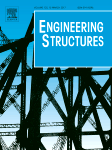Next directions in experimental data for seismic hazard mitigation
Aus International Center for Computational Logic
Next directions in experimental data for seismic hazard mitigation
Ignacio Lamata MartínezIgnacio Lamata Martínez, Martin S WilliamsMartin S Williams, Shirley DykeShirley Dyke, Markus KrötzschMarkus Krötzsch, Pierre PegonPierre Pegon
Ignacio Lamata Martínez, Martin S Williams, Shirley Dyke, Markus Krötzsch, Pierre Pegon
Next directions in experimental data for seismic hazard mitigation
Engineering Structures, 136:535-546, 2017
Next directions in experimental data for seismic hazard mitigation
Engineering Structures, 136:535-546, 2017
- KurzfassungAbstract
Data are one of the main assets of earthquake engineering. Laboratory experiments can be extremely expensive and time consuming to replicate and, therefore, long-term preservation of experimental data and sharing the data with users has become one of the disciplinary priorities. There is a growing demand for international partnerships, which creates a need for data sharing, in an attempt to maximise research impact and to tackle experimental set-ups that could not be realised otherwise. However, there is a patent lack of interoperability between the institutions forming the earthquake engineering community, which inhibits efficient collaboration between them. In this paper, we discuss a vision about the directions that experimental data should take in the coming years, focusing on two aspects: enhanced international collaborations and implementation of open data access. We also describe the progress that has been made towards this vision, by establishing an open platform for the integration of earthquake hazard mitigation resources called Celestina. Celestina is supported by Semantic Web technologies, and uses an ontology as its integration data model. A prototype of the platform has been developed and tested between NEES (Purdue University, in the US), the University of Oxford (in UK) and EUCENTRE (in Italy), and a small proof of concept has enabled integrated experimental data from Oxford and EUCENTRE through the NEES cyberenvironment. This demonstration provides an example which has the potential to catalyze a new generation of research progress enabled by international data sharing. - Projekt:Project: Cfaed, DIAMOND, HAEC B08
- Forschungsgruppe:Research Group: Wissensbasierte SystemeKnowledge-Based Systems
@article{MWDKP2017,
author = {Ignacio Lamata Mart{\'{\i}}nez and Martin S Williams and Shirley
Dyke and Markus Kr{\"{o}}tzsch and Pierre Pegon},
title = {Next directions in experimental data for seismic hazard
mitigation},
journal = {Engineering Structures},
volume = {136},
publisher = {Elsevier},
year = {2017},
pages = {535-546},
doi = {10.1016/j.engstruct.2016.12.012}
}
